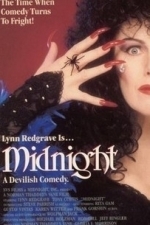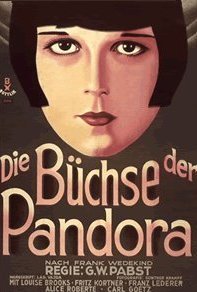Search
RəX Regent (349 KP) rated Pandora's Box (1929) in Movies
Feb 18, 2019
Pandora’s Box was one of the last films of the silent era, a period of transition to sound which I believe set the art of cinematography back a decade.
In short. Pandora’s Box looks stunning! Using the frame to its fullest, with a combination of wide framing and exploiting the art of the close up as Lulu herself, would the men around her, as well as driven by brilliant performances by most of the cast. But kudos needs to go to the star, Louise Brooks, as she portrays Lulu, the alluring flapper girl who can work her innocent, secutive magic on anyone, men and women alike.
But this is not limited to the narrative’s characters as her performance is subtle and underplayed, oozing out the silver screen and seducing the audience with same allure. If looks could kill, then this movie has them all.
With a sparse use of inter-titles, the film relies on both the physicality of the cast and imaginative cinematography to convey the seductive and danger of the events as they unfold over the two and bit hour runtime. Fritz Korner in particular rivals Brooks with the intensity of his performance as the ill fated husband of the girl about town.
And then there’s Alice Roberts, the Countess, who is widely thought to have the first lesbian to be seen on screen. Only Belgian actress’s second film in her short career, is played very Germanic, yet sympathetic as she too, has been drawn under Lulu’s spell.
This was made during the period in which German cinema was ruling, driving the art form from the nickelodeon to the theatre, but this was about to change in the 1930’s with advent of the sound and the golden age of American cinema. But as this film proves, you do not need sound to tell or show a good story.
Granted, the central story is pretty mediocre; a simple tale of a damaged woman who instinctively uses her allure to get her own way yet not as a diva, just an instinctive manipulator, casting her spell far and wide until that spell leads her into the hands London serial killer, Jack The Ripper (Gustav Diessl). But she is never portrayed as evil or scheming, just as herself as those around her are drawn to her aide.
There is little of the pantamine action or motives that you can expect from this genre even now, 90 years on.
But German director G.W. Pabst manages to create a multi-layered tale, deepened by psychological and social subtext, achieved as much because of the relationship he garnered with the star, Brookes, as he played on her natural talents to bring one of cinemas most defining roles to the screen. This would be the first of two collaborations between the director and the wayward starlet that year.
Pandora’s Box is yet another example of how German Cinema was leading the world back in the 1920’s; and even though the second world war may have brought this golden era to an abrupt end, it’s legacy lives on today with the styles, both in front and behind the camera, still being honoured by entire film industry now and hopefully for decades to come.
In short. Pandora’s Box looks stunning! Using the frame to its fullest, with a combination of wide framing and exploiting the art of the close up as Lulu herself, would the men around her, as well as driven by brilliant performances by most of the cast. But kudos needs to go to the star, Louise Brooks, as she portrays Lulu, the alluring flapper girl who can work her innocent, secutive magic on anyone, men and women alike.
But this is not limited to the narrative’s characters as her performance is subtle and underplayed, oozing out the silver screen and seducing the audience with same allure. If looks could kill, then this movie has them all.
With a sparse use of inter-titles, the film relies on both the physicality of the cast and imaginative cinematography to convey the seductive and danger of the events as they unfold over the two and bit hour runtime. Fritz Korner in particular rivals Brooks with the intensity of his performance as the ill fated husband of the girl about town.
And then there’s Alice Roberts, the Countess, who is widely thought to have the first lesbian to be seen on screen. Only Belgian actress’s second film in her short career, is played very Germanic, yet sympathetic as she too, has been drawn under Lulu’s spell.
This was made during the period in which German cinema was ruling, driving the art form from the nickelodeon to the theatre, but this was about to change in the 1930’s with advent of the sound and the golden age of American cinema. But as this film proves, you do not need sound to tell or show a good story.
Granted, the central story is pretty mediocre; a simple tale of a damaged woman who instinctively uses her allure to get her own way yet not as a diva, just an instinctive manipulator, casting her spell far and wide until that spell leads her into the hands London serial killer, Jack The Ripper (Gustav Diessl). But she is never portrayed as evil or scheming, just as herself as those around her are drawn to her aide.
There is little of the pantamine action or motives that you can expect from this genre even now, 90 years on.
But German director G.W. Pabst manages to create a multi-layered tale, deepened by psychological and social subtext, achieved as much because of the relationship he garnered with the star, Brookes, as he played on her natural talents to bring one of cinemas most defining roles to the screen. This would be the first of two collaborations between the director and the wayward starlet that year.
Pandora’s Box is yet another example of how German Cinema was leading the world back in the 1920’s; and even though the second world war may have brought this golden era to an abrupt end, it’s legacy lives on today with the styles, both in front and behind the camera, still being honoured by entire film industry now and hopefully for decades to come.


